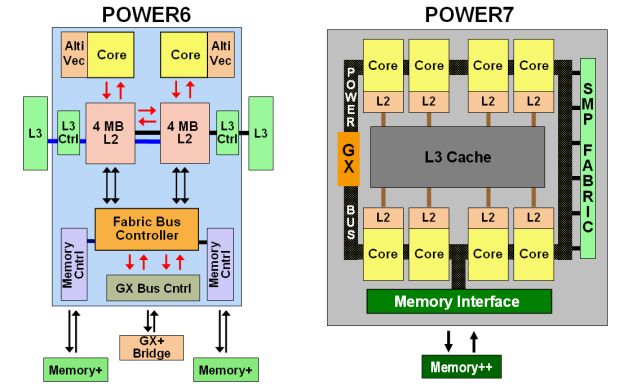Force application

The previous post on Power processors gathered a lot of comments from the interested public, so we decided to write a little sequel and tell, or to be more precise, show how the architecture of the latest generation processor has changed, as well as some calculations of performance tests.
By the way: it was noticed by many that, despite the wide possibilities of RISC processors in the real world, their application boils down to several, more specialized tasks. I hasten to disappoint: according to the latest Power-based chips are used in another, widely popular, device - the Nintendo Wii console. Since 2006, when Nintendo launched the latest generation of game consoles, IBM supplied more than 90 million processors, and in the future this figure will only grow as the Wii U, which is expected to appear on store shelves in 2012, also works on the central processor production of a well-known company.
')

As for the performance tests, they are also at our disposal, and, in principle, are available for viewing to anyone who wants on spec.org , tpc.org and ideasinternational.com . I am sure that everyone is interested in what result Power processors show in comparison with competitors.

And one more illustration.

Instead of writing and speaking, we decided to show what the Power processors are capable of. With the development of technology, the result will only increase, so we will not allow competitive positions to take our place in the benchmark results.
PS Habragolos was heard - starting from the next topic, we will be blogging about new, little-known and innovative technologies and developments that IBM is engaged in.
Source: https://habr.com/ru/post/134930/
All Articles